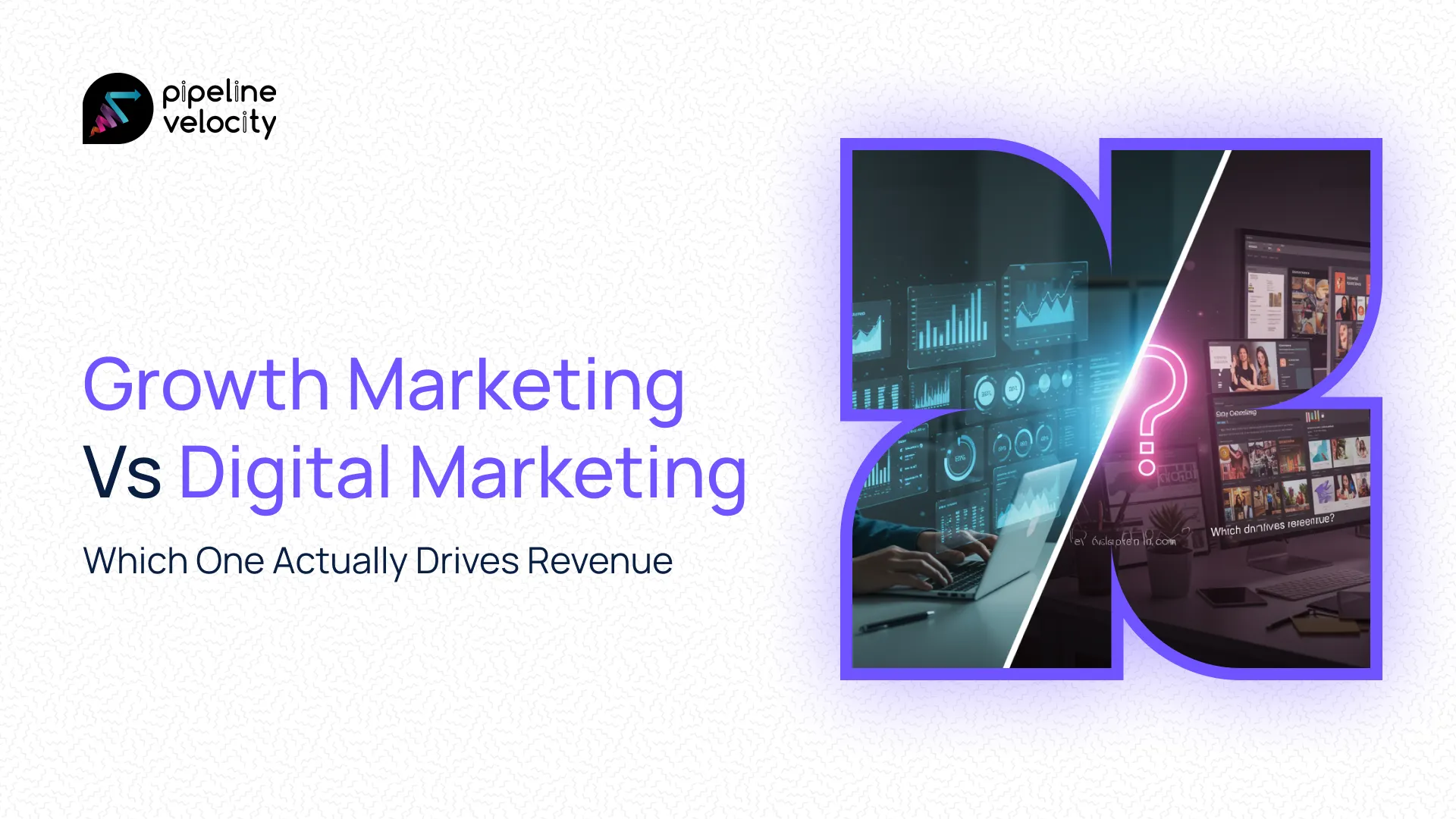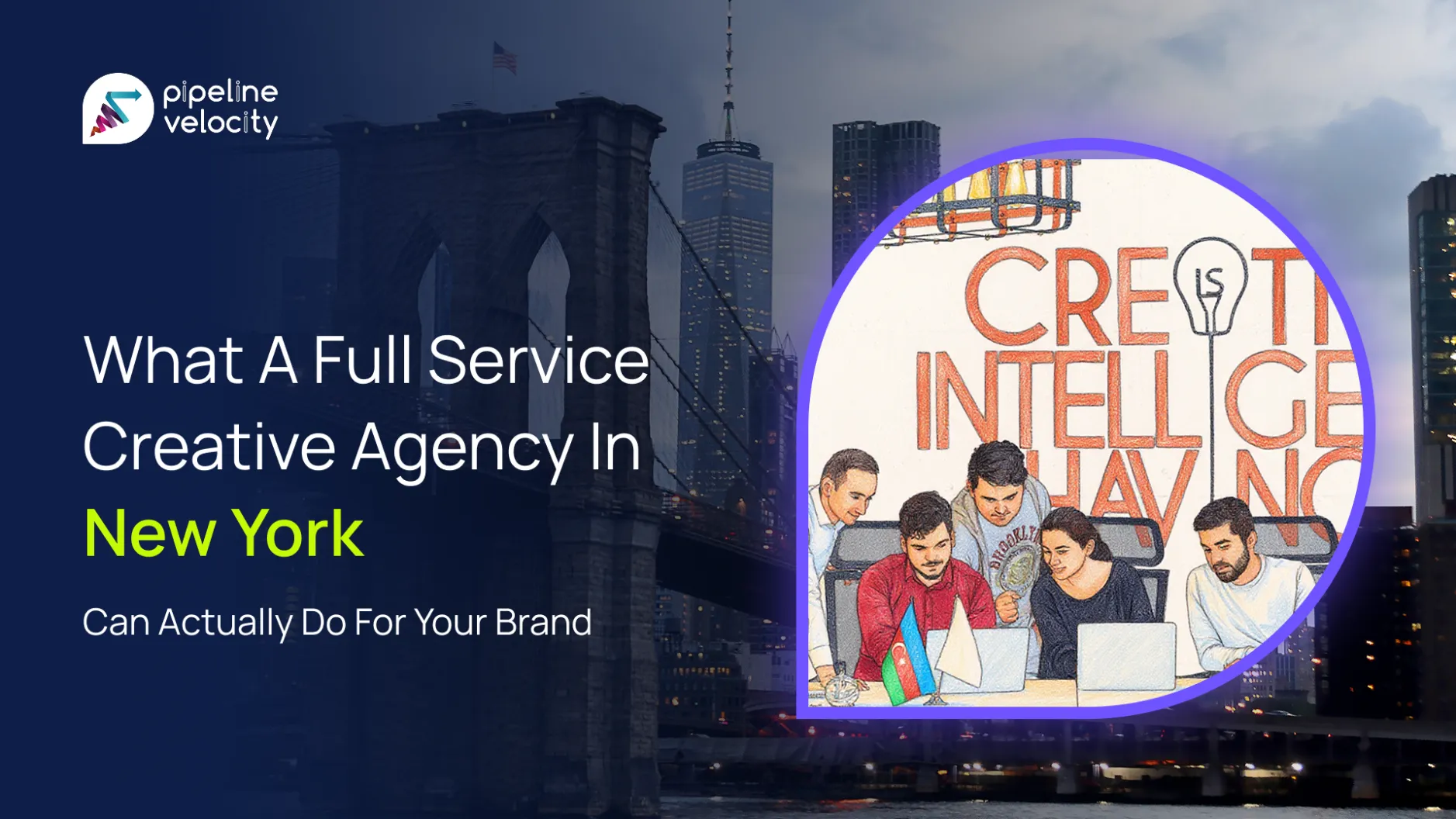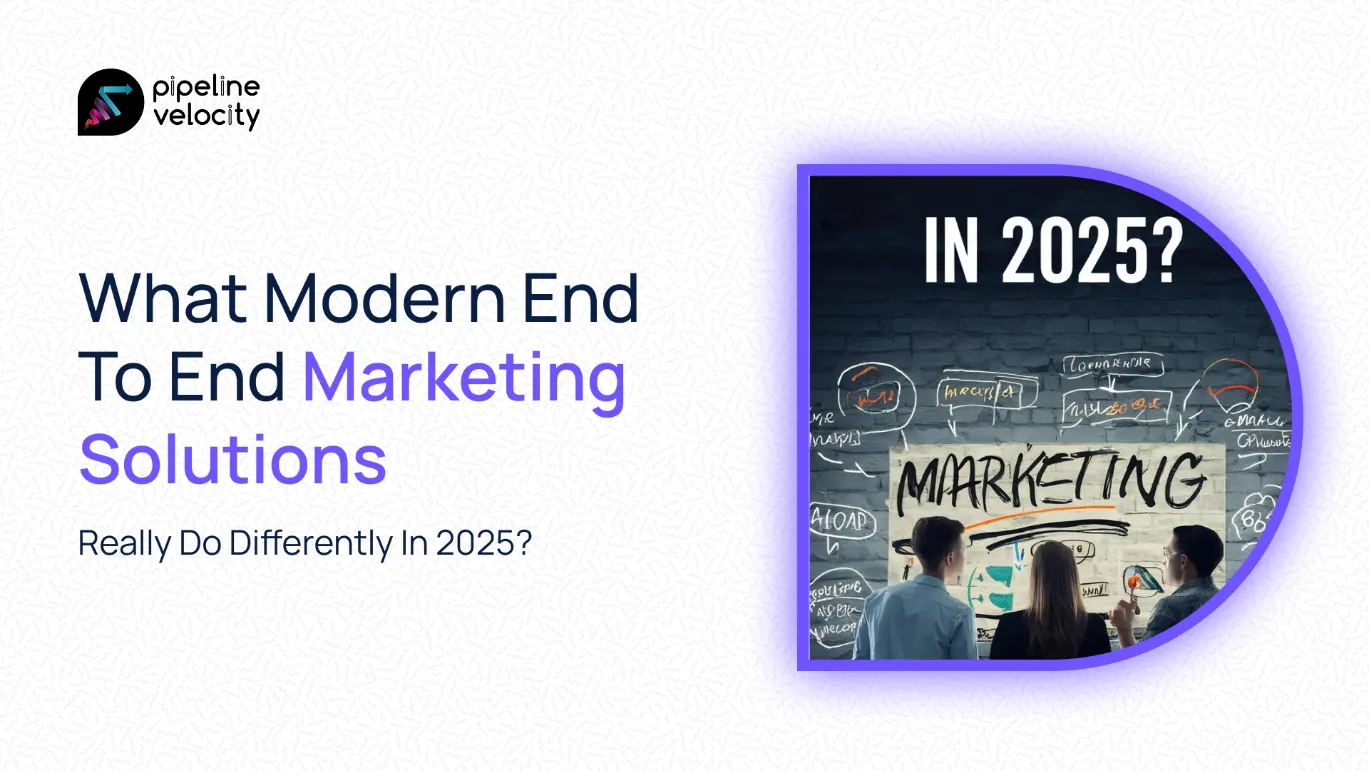End to end marketing solutions blend strategy, data, creative, and execution into one operating system for growth. Teams map the full customer journey, from the first search to renewal, then use content, SEO, paid media, email, and sales enablement to move buyers one clear step at a time. Leaders ask how this differs from a full funnel plan, what ROI to expect, and which tools sit at the core. You want plain facts on costs, timelines, and the roles for your sales team and CRM platform. You also want examples of how companies tie buyer personas to channels and measure real revenue lift, not vanity clicks. This guide answers those questions, shows where most stacks break, and gives a playbook you can put to work this quarter.
What End To End Marketing Really Means Today
End to end marketing means one strategy, one plan, and one set of metrics across the whole customer journey. The approach covers awareness, evaluation, purchase, onboarding, retention, and expansion without handoffs that drop leads or slow deals. Teams run search engine optimization, paid search, paid social, content marketing, email marketing, and web design from one roadmap that sales agrees with. The plan defines buyer personas, channel roles, offers, and success metrics before any campaign launches. Your CRM platform, analytics, and marketing automation tie the loop so you capture every touch and turn that data into action. For a step-by-step planning template, use our marketing playbook guide.
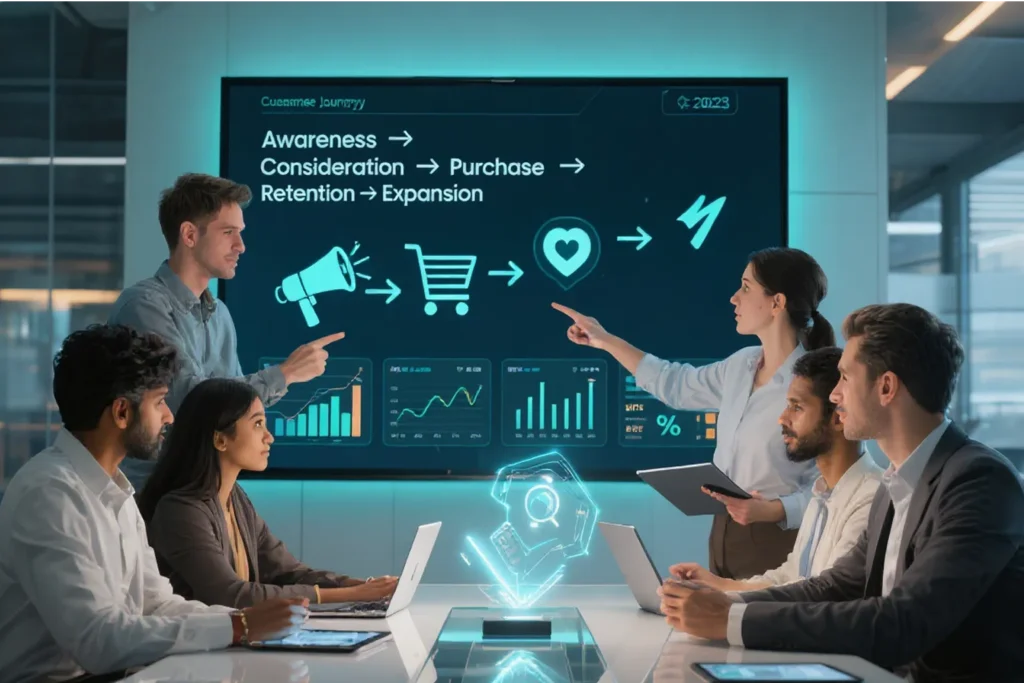
How end-to-end marketing strategy maps the full customer journey
An end-to-end marketing strategy starts by charting every stage a buyer experiences. Teams write clear stage definitions and exit criteria, then attach offers and content types to each stage. Top of funnel may use educational articles, guides, and short videos to build awareness. Middle of funnel leans on comparison pages, case studies, and webinars that answer deeper questions. Bottom of funnel delivers demos, pricing clarity, ROI calculators, and proof that de-risks a decision. After the sale, lifecycle campaigns handle onboarding, product adoption, and expansion offers so revenue continues to grow.
Why end-to-end marketing beats piecemeal marketing services
Piecemeal services create channel silos that push conflicting goals. One vendor may chase impressions while another hunts for clicks that never convert in your CRM. End-to-end teams align incentives to pipeline, revenue, and lifetime value so every channel supports the same goal. Content, creatives, landing pages, and sales enablement ship as one package so message and design match buyer intent from ad to meeting. This alignment improves conversion rate, lowers cost per opportunity, and shortens the sales cycle because the journey feels coherent for the buyer and simple for the sales team.
Our Services at Pipeline Velocity for End-to-End Growth
Our services at Pipeline Velocity connect research, creative, media, and CRM so your team runs one simple plan across the customer journey. We build search foundations with our SEO services and scale demand with PPC management. We turn your site into a conversion asset through web design and development that loads fast and answers intent. When you need a single team to own planning and execution, our growth marketing services give you strategy, assets, and reporting in one place. If you prefer senior leadership without full-time overhead, tap our CMO as a Service to guide roadmap and revenue operations.
What Full Funnel Marketing Brings To The Table
Full funnel marketing gives structure to how you create demand and capture it. The model breaks work into awareness, consideration, and decision so you can assign content, budgets, and KPIs to each stage. Your team sees where the funnel leaks and fixes the right stage first, not the loudest channel. The framework also helps with forecasting since you can estimate how many touches and assets you need to fill future pipeline. When you combine full funnel with end-to-end operations, you get a system that creates demand, captures it, and grows accounts after the sale.
Stages of awareness, consideration, and decision explained
Awareness introduces pain points and outcomes without heavy product talk. Consideration compares approaches, outlines tradeoffs, and positions your category fit. Decision answers risk, price, timelines, and what happens after purchase. Each stage asks for a specific action, such as download a guide, join a webinar, book a demo, or review a proposal. You measure each stage with stage-specific metrics that ladder to revenue, not surface-level stats.
How full funnel marketing ties into content and media marketing
Content gives the funnel its voice while media brings scale and speed. Top of funnel content drives search engine visibility and fuels social media marketing with shareable insights. Middle of funnel content arms sales with comparison pages, industry case studies, and product walkthroughs that answer objections. Paid search and paid social then distribute your best pieces to the right personas at the right time. Email and marketing automation turn engagement into meetings, trials, and proposals with timed offers and personal follow ups. For a deeper look at modern content ROI, read our take on blogging in 2025. If you run influencer programs, follow the FTC’s Endorsement Guides and email programs should comply with the CAN-SPAM Act.
How End To End Marketing And Full Funnel Marketing Work Together
These strategies fit like gears. End-to-end gives you the operating model, tools, and cross-team rituals. Full funnel gives you the stage framework and asset plan. Together they align buyer personas, channels, and offers so no stage sits starved for assets and no channel runs off script. Your CRM tracks stage movement while your analytics stack shows which content, keywords, and creatives pull buyers forward. Sales and marketing review this movement weekly so they can fix friction fast. Learn how this plays with generative search in our Generative Engine Optimization guide.
Aligning buyer personas with customer journeys
Personas define problems, information sources, and purchase triggers for each audience you target. You map those signals to journey stages and assign channel roles to hit them where they spend time. For example, technical buyers respond to detailed how-to content, benchmark data, and product tours, while economic buyers want ROI, risk, and peer proof. Your plan reflects those differences with tailored assets, keywords, and offers across search, social, and email. When the team writes, designs, and launches from one shared persona doc, the message feels consistent and relevant at every step.
Building seamless campaigns across multiple marketing channels
Seamless campaigns start with one brief that lays out goal, audience, message, offer, and measures. Creators then craft search ads, social posts, landing pages, emails, and sales decks that share the same promise and proof. UTM standards, pixel health checks, and QA lists keep data clean so your reports match across ad platforms and your CRM. Teams plan a launch window with a checklist that includes lead routing, alerts for sales, and dashboards that spotlight early signals. After launch, weekly reviews look at stage conversion, creative fatigue, and lead quality so you ship fixes while the campaign runs.
Case studies where both strategies boosted business growth
A B2B software firm tied full funnel content to an end-to-end engine and raised SQL to opportunity conversion by double digits within a quarter. The team rebuilt awareness with research reports, then moved readers to demos through comparison pages and ROI tools. Sales played from the same deck and followed a clear handoff process from form fill to booked meeting. A mid-market e-commerce brand unified search, social, and email under one plan and lifted return on ad spend while lowering first purchase CPA. In both cases, a shared roadmap and one metric stack replaced disconnected efforts that wasted budget.
Challenges That End To End Marketing Solves For Businesses
Most teams stall because they split strategy, creation, media, and data across too many vendors or internal silos. Leads fall through the cracks, sales lacks context, and reports do not match. End-to-end operations solve this by unifying planning, creative, distribution, measurement, and post-sale programs. The model ends turf wars over credit because pipeline and revenue sit as the scoreboard everyone sees. You get faster learning cycles and fewer meetings because the same team owns inputs and outcomes.
Eliminating disconnects between sales teams and marketing campaigns
Sales needs clean context, fast alerts, and content that fits the talk track. End-to-end teams meet with sales weekly, review upcoming campaigns, and agree on definitions for MQL, SQL, and opportunity. Lead routing rules live in the CRM, alerts fire on key actions, and playbooks guide follow ups by persona and stage. Sales shares call snippets and common objections so marketing can update copy, pages, and assets that answer those concerns. This loop raises meeting quality and close rates because both sides run the same play.
Improving customer relationship management with one platform
When your CRM platform holds every touch, you cut duplicate records and lost context. Marketing automation logs form fills, page views, and email engagement, then syncs to contact and account records. Sales sees what content drove interest, which keywords brought the visitor, and what messages landed in email. Service sees onboarding progress and product usage so they can trigger help before tickets escalate. This single view keeps your team focused on the next best action for each account.
Overcoming fragmented digital marketing strategies
Fragmented tactics waste time on campaigns that never stack toward revenue. An end-to-end plan assigns each tactic a job and cuts any work that does not move a stage forward. Search engine optimization earns high intent traffic that lands on pages built for conversion. Paid media amplifies proven pages and offers rather than chasing broad reach. Email and lifecycle flows keep the relationship warm with helpful content and timely nudges that lead to demos, trials, or rep conversations. We also amplify proven pages with integrated PPC and SEO so paid dollars follow organic winners.
How End To End Marketing Differs From Traditional Marketing Approaches
Traditional approaches treat channels and departments as separate jobs. Teams write a plan once a year, then run ads and content with limited feedback loops. End-to-end teams ship, learn, and adjust every week based on stage movement and sales feedback. The difference shows up in conversion rate, cost per opportunity, and sales velocity because the work follows how buyers actually shop. The modern approach respects the full customer experience instead of only top of funnel.
Why customer experience is central to end-to-end marketing strategy
Customer experience sits at the center because buyers judge every touchpoint. They want pages that load fast, content that answers the next question, and sales interactions that feel helpful. End-to-end teams design each step to remove friction so buyers feel progress. You test forms, messages, and page layouts, then keep the winners and scrap the losers. This focus turns marketing from a broadcast function into a guided experience that earns trust and action.
The role of CRM platforms and automation in driving results
CRM and automation tools translate intent signals into action. Lead scoring highlights the contacts who act like past buyers, while routing rules send them to the right rep. Nurture streams deliver content that fits the last touch, not a generic monthly blast. Sales sequences keep outreach timely and personal. Reporting ties campaign costs to pipeline stages and revenue so you see which mix of SEO, content, paid search, and paid social returns the most value.
Comparing digital marketing versus old-school methods
Old-school methods favor broad reach with loose targeting and thin measurement. Modern digital marketing pinpoints audiences, matches messages to search intent, and tracks behavior across devices. You can see which keyword drove a demo, which video earned a return visit, and which email closed the loop. This precision reduces waste and lets you move budget to the winners while pausing the rest. The result is a media plan that compounds rather than resets each quarter.
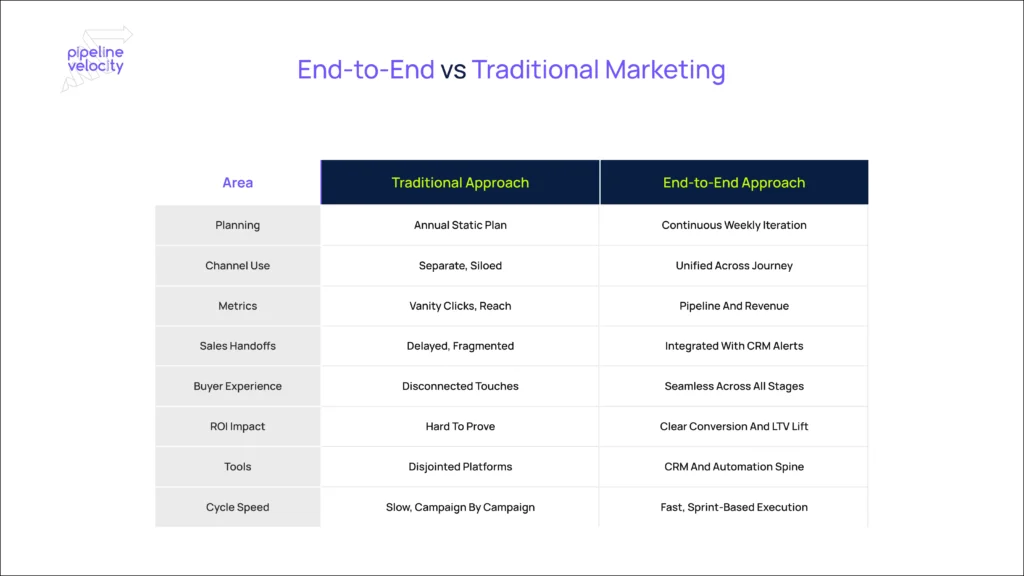
ROI Of End To End Marketing Solutions Explained
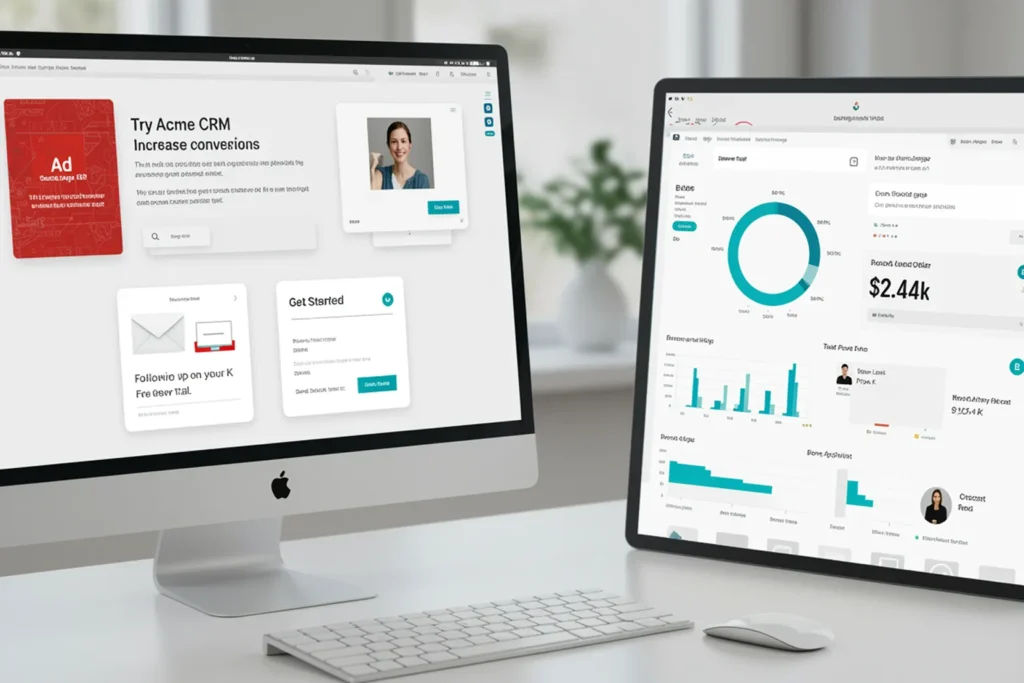
ROI comes from three levers that work together. You raise conversion rate at each stage, lower acquisition costs by cutting waste, and grow lifetime value through better onboarding and expansion. With one team, one brief, and one data spine, you avoid the hidden taxes of misalignment. Your dashboards show how leads move, where they stall, and which assets fix the stall. When you invest in this system, you buy a repeatable engine that improves every month. For macro context on digital buying behavior, the U.S. Census Bureau e-commerce report provides quarterly benchmarks.
Conversion rate gains across search engine and social media marketing
End-to-end teams improve conversion by matching keywords, ads, and landing pages to the same message and offer. Search engine marketing uses exact-match intent, while paid social targets the buyer persona with creative that mirrors the landing page and follow-up email. Consistency cuts bounce, raises time on page, and turns more clicks into form fills or chats. Sales sees the same promise in the deck, which keeps momentum from first click to signed order. Over time, these gains compound and lower your blended cost per opportunity. See how our SEO services align queries, ads, and pages to raise conversion.
Lead generation impact through account-based marketing
Account-based marketing focuses effort on the accounts that matter most. You build target account lists with sales, tailor messages by role, and run coordinated plays across ads, email, direct mail, and outbound. Site personalization reflects the account’s industry and pain points so the visitor feels understood. Sales uses insights from ad and website engagement to time outreach and reference what drew interest. This focus shortens sales cycles and increases deal size because the experience feels bespoke.
Case study: measurable revenue lift from integrated campaigns
A SaaS company serving healthcare unified SEO, paid search, paid social, and lifecycle email under one plan. The team published a library of buyer guides and compliance checklists that ranked for high intent terms. Paid search promoted those pages to surge demand during buying windows, while paid social retargeted visitors with short proof videos. Email nurtured signups with product tours and case studies, then handed qualified signals to sales with alerts and sequences. Within two quarters, marketing sourced revenue grew, sales cycle time dropped, and expansion revenue rose as onboarding emails increased product adoption.
Metrics to baseline and track
- Pipeline sourced by marketing, not just lead volume
- Stage conversion rates from visitor to MQL to SQL to opportunity to win
- Cost per opportunity and cost per win by channel and mix
- Sales cycle length and win rate by persona and industry
- Expansion, retention, and average revenue per account after onboarding
Best Practices To Maximize An End To End Marketing Strategy
Strong end-to-end programs follow a cadence. You run a quarterly planning cycle that sets targets and themes, then a weekly sprint that ships assets and reviews performance. You protect a shared brief, shared dashboards, and a single backlog that marketing and sales prioritize together. You document definitions, routing rules, and QA steps so nothing goes live half-baked. This discipline feels simple, and that is the point because simple systems scale.
Aligning sales team and marketing agency efforts
Invite sales to the earliest planning conversations and keep them there. Build offers they can confidently repeat on calls and in emails. Share a calendar of launches, enablement assets, and the alerts they will receive when buyers engage. Hold a weekly pipeline review that looks at stage movement and listens to a few calls so you hear the truth from the field. When you need outside help, pick a marketing agency that works directly in your CRM and analytics so reports and action stay in one place.
Using web design and search engine optimization as growth drivers
Your website acts as the system’s home base. Design pages for speed, clarity, and a single next step. Use search engine optimization to capture high intent traffic with pages that answer the exact query and offer a helpful action. Pair those pages with matching ad groups so paid search and paid social amplify what already works. Keep forms short, test headlines that mirror query language, and place proof near calls to action so visitors feel safe to act.
Creating a marketing approach rooted in data-driven decisions
Decisions start with a clean data foundation. Standardize UTM tags, define events, and audit pixels before launch. Build dashboards that show stage movement, not only channel clicks, so you can see the health of the whole journey. Run controlled tests with single-variable changes and give tests enough time to reach significance. When something wins, roll it out across channels so the system benefits, not just one ad set. If your content team wants to rank in AI answers, use this checklist to optimize for ChatGPT and generative engines.
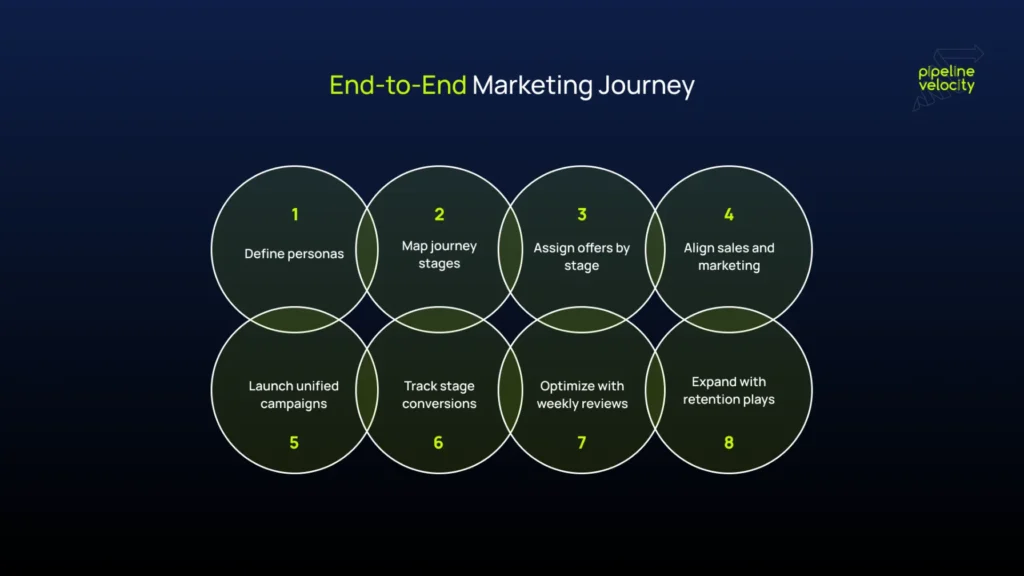
At Pipeline Velocity, We Help You Turn Strategy Into Revenue
At Pipeline Velocity, we help you move from ideas to measurable pipeline with clear offers, clean data, and fast iteration. Use CMO as a Service when you need experienced leadership that ties marketing to sales outcomes. Pick a packaged mix on our pricing page or start with a free marketing audit to see quick wins. When search and paid need to work in tandem, our integrated PPC and SEO approach improves conversion and lowers blended cost per opportunity. We meet you where you are and build a system that compounds month after month.
In summary…
The end-to-end model wins because it connects strategy to execution and measures success where it matters. You plan once, build once, and deploy across channels with one message and one scoreboard. Sales, marketing, and service work from the same data so the customer experience feels seamless. Use the practices here to tighten your stack and grow with less waste.
- Core idea
- One roadmap ties awareness to expansion
- One data spine tracks every touch
- One roadmap ties awareness to expansion
- Full funnel role
- Stages guide content and offers
- Budgets map to stage goals
- Stages guide content and offers
- Tools and team
- CRM and automation convert signals into action
- Shared briefs and dashboards keep work aligned
- CRM and automation convert signals into action
- ROI levers
- Raise conversion at each stage
- Lower acquisition cost by cutting waste
- Grow lifetime value with better onboarding
- Raise conversion at each stage
- First moves this quarter
- Document personas and journeys
- Fix your highest-traffic landing pages
- Align sales playbooks with campaign promises
- Baseline stage conversion and cycle length
- Document personas and journeys
Wrap this up by setting one quarterly theme and three measurable outcomes. Use weekly sprints to ship assets and review movement. Small, consistent improvements compound into outsized results.
FAQs
What is end-to-end marketing and how does it differ from full funnel marketing?
End-to-end marketing covers the full lifecycle from first touch to renewal and expansion. It includes strategy, content, media, web, analytics, CRM operations, and post-sale programming under one plan. Full funnel marketing focuses on the demand stages of awareness, consideration, and decision. The two work best together because end-to-end gives you the operating system while full funnel gives you the stage framework. Together they keep teams aligned and buyers moving.
How do end-to-end marketing solutions improve ROI?
They improve ROI by raising conversion rate at each stage, reducing media waste through better targeting and message match, and growing lifetime value with stronger onboarding and expansion plays. One team and one data model cut the hidden costs of misalignment and rework. Clean routing and fast sales follow up raise the share of leads that become qualified opportunities. Over time, the system compounds because each win becomes the new baseline for the next sprint.
What challenges can an end-to-end marketing strategy solve?
It solves misaligned goals, duplicate work, and channel silos that slow growth. It gives sales better context and faster alerts so outreach feels timely and relevant. It replaces vanity metrics with stage and revenue metrics that drive better decisions. It also reduces tool sprawl by centering work in a CRM and automation stack that the whole team uses. The result is a calmer, more productive program that delivers predictable pipeline.
How is customer experience improved with end-to-end marketing?
Customers feel a single story from ad to page to call, which builds trust. Pages load fast, offers match intent, and emails follow up with useful next steps rather than noise. Sales comes prepared with the same proof and message the buyer saw online. Service knows what sold the account and supports onboarding with the right resources. This consistency turns buyers into advocates who return and refer.
Why should businesses in 2025 consider adopting end-to-end marketing solutions?
Buyer journeys stretch across channels and devices, and teams cannot afford leakage or guesswork. End-to-end solutions give leaders clarity on where to invest, what to build next, and how to measure progress. The approach future-proofs your stack because it focuses on fundamentals that outlast platform shifts. It also gives your team a calmer way to work since everyone pulls toward the same goals. If you want growth with less waste, this is the model to adopt.

